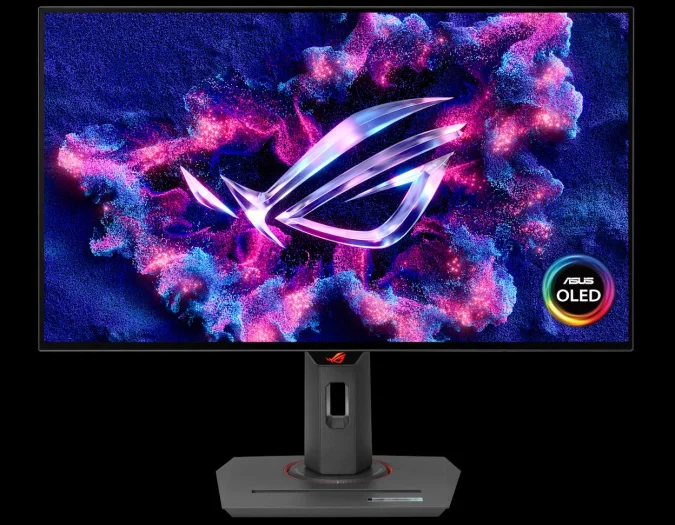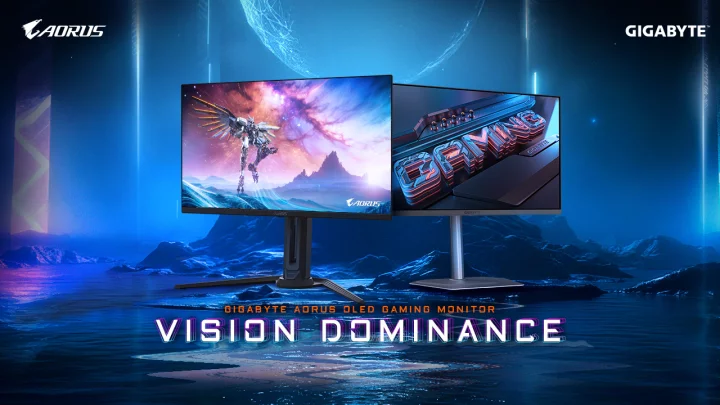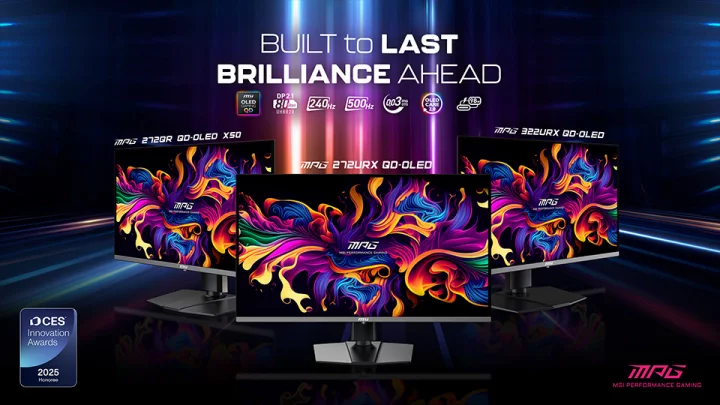Last week we wrote about a 750Hz gaming monitor that was announced ahead of CES 2025 (where it will be on display this week) by the Chinese company Koorui. However, it will still be based on older LCD technology, where the high frequency struggles with the response effect (slow pixel changes) with each frame. CES 2025 will bring one alternative that could possibly be better – monitors with only 500Hz, but with OLED technology.
A 750Hz LCD takes 1.33 milliseconds to frame, but it has a typical gray-to-gray response of 0.5ms. It must be said that OLED also does not have a non-zero response, although its effect is not usually talked about that much with this technology. But at least it should be significantly shorter. This means that the image data is more clearly readable (“correct”) very soon after the image starts to be displayed. So even if you have a lower frequency of “only” 500Hz, and therefore each frame lasts 2ms, maybe the overall impression and even the player’s ability to react quickly could still be at a better level than with a 750Hz LCD.
Samsung Odyssey G60SF
Several companies will present these monitors at CES 2025. Samsung should probably be mentioned first, because the panels could probably come directly from them. The Korean concern will launch the Odyssey G60SF model (G6 series). According to the company, it should be the first OLED (or apparently QD-OLED) monitor with a 500Hz refresh rate combined with a resolution of 2560 x 1440 pixels (16:9) on a 27-inch diagonal.
This panel configuration is, or at least for many years was, the long-term optimum for more demanding gaming (and the combination of 27 inches and 1440p resolution is very popular) with less performance requirements than 4K, but significantly better quality than Full HD. This screen and similar ones will therefore provide overall much better image quality than the 750Hz LCD, as it only displays 1920 x 1080 pixels (aside from the disadvantages of the TN panel).
The screen has a claimed response time of just 0.03ms, so the response effect (motion blur) should be significantly eliminated against even the best LCDs. The monitor will support adaptive refresh using FreeSync Premium Pro (but with certified compatibility with GeForce graphics). It is an HDR screen with VESA DisplayHDR True Black 400 certification. A matte finish against glare is mentioned.
Asus ROG Strix OLED XG27AQDPG
Similar monitors, possibly even with the same panel, will also be presented by the usual gaming monitor manufacturers. Asus will have one under the name ROG Strix OLED XG27AQDPG. Again, it is a 27-inch monitor with a resolution of 2560 × 1440 pixels, which can only draw at a frame rate of 500 Hz. The same 0.03ms response is quoted, and Asus also mentions the gamut (99% DCI-P3) and that 10-bit colors are used, which is automatically expected for an HDR monitor.
Asus states that the ROG OLED Anti-Flicker 2.0 anti-flicker technology is applied to the monitor, it should work on the principle of brightness compensation according to the length of the image display. And also protection against burning and wear of OLED pixels (ROG OLED Care Pro) consisting in the fact that the screen turns off (displays a black area when the pixels are inactive) if the built-in sensor measuring the distance of the user from the screen detects that the user is not in front of the monitor (function has various customization options, of course), when it returns, it activates the image again.
Asus states that this monitor will be available for pre-order from 1/21, but the availability date has not yet been announced (and neither has the price). However, for similar products it is better to wait for reviews first.
Gigabyte Aorus FO27Q5P: Already with DisplayPort 2.1
Gigabyte also presents such a monitor: model Aorus FO27Q5P. Again, it delivers 2560 × 1440 at a frequency of up to 500 Hz on a diagonal of 27 inches with QD-OLED technology and HDR display. According to Gigabyte, its monitor could apparently have increased brightness, as it received the VESA DisplayHDR True Black 500 mark. In addition, the ClearMR 21000 mark guaranteeing the quality of motion rendering (which should be awarded later when this standard is formally introduced, so far it has ClearMR 13000).
Adaptive refresh technology isn’t listed, so we’re guessing both Asus and Gigabyte have pretty much standard FreeSync instead of Nvidia’s closed proprietary G-Sync. What is interesting, however, is that the Gigabyte monitor, unlike the Asus, already supports DisplayPort 2.1, in the fastest UHBR20 mode. As a result, lossy image compression may not be necessary, or if it is, only mild. DP 2.1 UHBR20 has three times the data throughput (77.37 Gb/s) against DisplayPort 1.4 (25.92 Gb/s).
Currently, DisplayPort 2.1 UHBR20 can be used on Radeon Pro and, to a lesser extent, DP2.1 UHBR13.5 and DP2.1 UHBR10 on Radeon RX 7000 and Intel Arc graphics. It is expected that from the new generation, Nvidia will also catch up with the delay it has here (all GeForce RTX 4000 can only do the old DisplayPort 1.4).
The monitor is also said to have image burn-in protection (Gigabyte OLED Care) allegedly based on AI. The manufacturer also mentions that the ability to switch to a resolution with an aspect ratio of 4:3 (for retro games) is remembered.
MSI MPG 272QR QD-OLED X50
Among board manufacturers and at the same time graphic designers who are also dedicated to gaming monitors, MSI will also present a monitor based on the same basis at CES 2025 under the designation MPG 272QR QD-OLED X50. Again, it is a 27-inch QD-OLED screen with a resolution of 2560 × pixels, which reaches a refresh rate of 500 Hz. The stated response of 0.03 ms also fits.
Just like Gigabyte, MSI presents DisplayHDR True Black 500 and ClearMR 21000 certifications. The monitor from MSI will also be able to connect via DisplayPort 2.1a in UHBR20 mode, again with the advantage that the image will be less compressed. The resolution is still only 1440p (albeit with the fact that 10-bit color needs more data), but you have to remember that 500 Hz is three and a half times the frames – and therefore the data rate – against the usual refresh rate of 144 Hz. So DP 2.1 will work well for these monitors.
Source: www.cnews.cz





